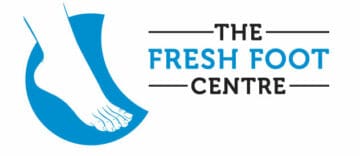One of the common painful conditions to affect our feet are bunions. A bunion is an abnormal, swollen bony bump that appears on the joint at the base of the big toe.
Bunions are considered as the enlargement in the joint of the big toe. Bunions are often accompanied by dislocation and, most of the time, pain. The medical term for bunions is Hallux Abducto-Valgus (HAV) or just plain Hallux Valgux.
When a person has bunions, he or she can incur arthritis in the joints, which will often result to footwear problems. Aside from that , other foot deformities may also develop such as hammer toes, callus, ingrown toe nails, and corns.
Bunions can be hereditary, but poor biomechanics and bad foot posture can heighten the risk of acquiring them. This is the reason why bunions are common within families. Bunions may also be caused by poor foot positioning coupled with bone length discrepancies – often leading to dysfunction, joint destruction, and dislocation of the big toe joint.
While poor foot posture is always a suspect, a person who has flat feet or has heavily pronated walking patterns is more likely to have bunions than people who have normal feet. On the other hand, hormonal changes, uncomfortable footwear, and excessive use of the big toe joints may also contribute to bunions.
Signs and symptoms of a bunion include:
- The base of the big toe is swollen and sticks out.
- The big toe is often bent towards the other toes, and sometimes the second toe is pushed to overlap the third toe.
- Skin around the big toe joint is red and sore.
- Thickened skin at the base of the big toe.
- Pain in the big toe or foot.
- Wearing shoes is painful.
- Pain or difficulty when walking.
Treatment
Most bunions can be treated without surgery. The first step for treating bunions is to ensure that your shoes fit correctly. Often, good footwear is all that is needed to alleviate the problem. Shoes that are wide enough to avoid pressure on the bunion are the obvious first step. Look for shoes with wide insteps and broad toes and definitely do not wear high heels.
Pads and toe inserts: Protective bunion pads may help to cushion the joint and reduce pain. There are available toe inserts that splint the toes straight. It may be recommended that you wear some orthotics to improve your foot position when walking.
Surgery: For more severe cases, surgery may be necessary. Bunion surgery aims to bring your big toe back into its correct position. Several different surgical procedures are utilised to treat bunions. These include ‘shaving’ excess bone, removing the end of one of the bones or breaking and re-aligning the misplaced bone. Rehabilitation from bunion surgery can be quite long and usually involves keeping your foot off the ground for some weeks. It may take a year or more to recover completey.
The The Fresh Foot Centre team of podiatrists has many years of experience to accurately evaluate and diagnose your foot condition. We have state-of-the-art 3D foot imaging laser scanner and computerised pressure plate system which we utilise to assess feet and lower limbs, and make the right orthotics when required.
Our services and orthotics can be claimed on the spot using your health insurance – no referral is necessary. We may recommend other diagnostics such as X-ray, MRI, and ultrasound (if the condition, symptoms, and initial diagnosis require them).


